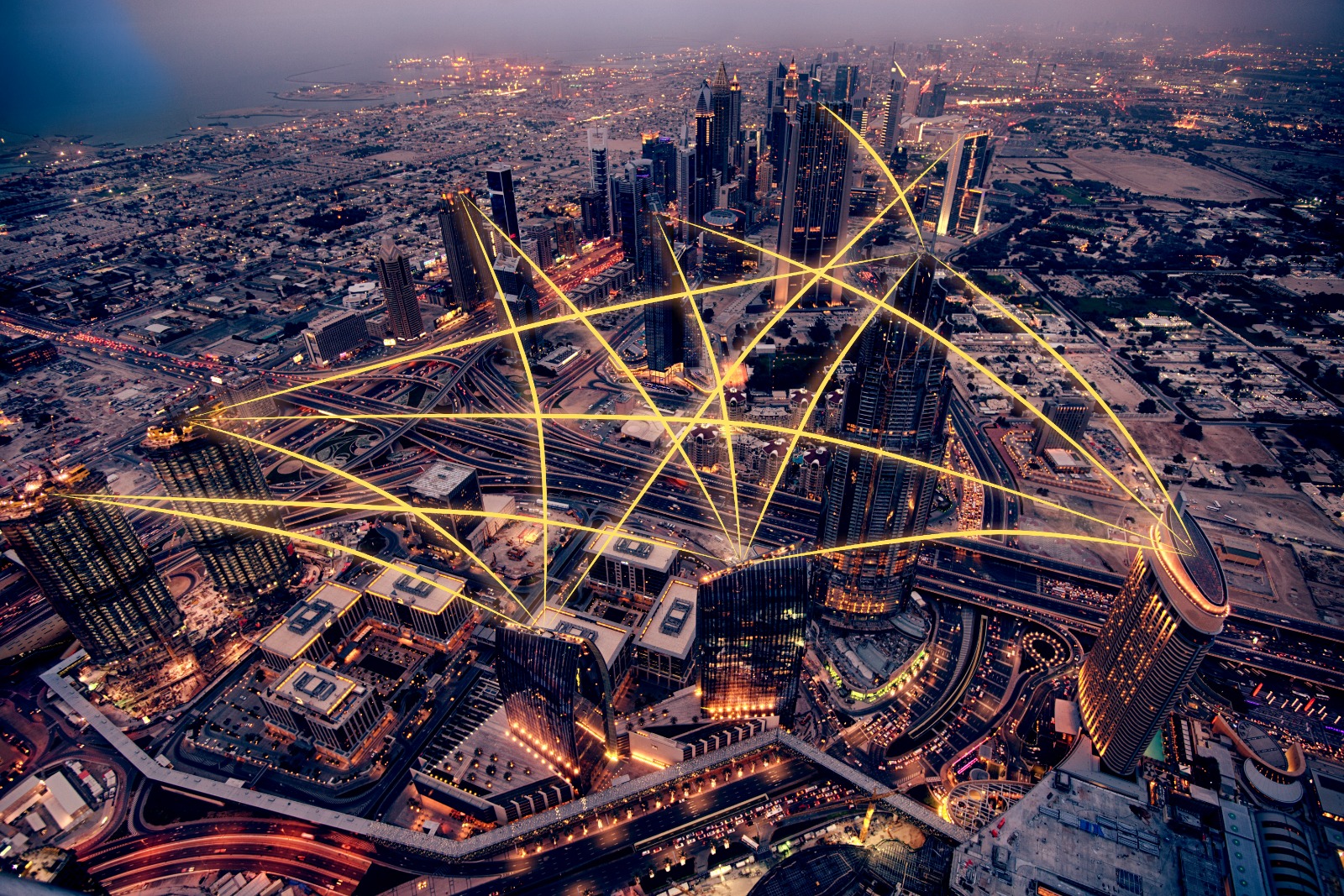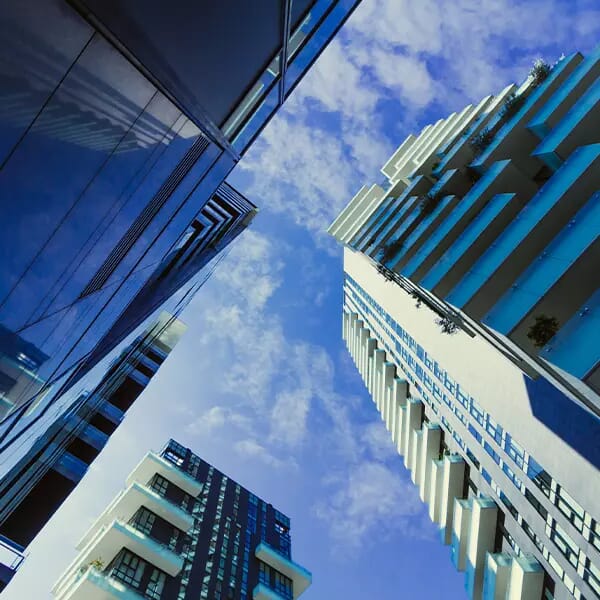 Credit: Pierluigipalazzi | AdobeStock
Credit: Pierluigipalazzi | AdobeStockBeyond Green Buildings
Deepki on integrating social aspects into ESG practices
February 29, 2024Real Estate
Written by Clementine Tanguy
As numerous companies actively pursue sustainability goals to reduce their carbon footprint and enhance the well-being of building occupants, certifications from widely recognized standards such as the UK-developed BREEAM, U.S-led LEED, or Australia-born Green Star, alongside more specialized programs like AirRated, are experiencing heightened demand.
Traditionally concentrated on environmental concerns, these certifications are undergoing a significant shift within the green building sector. Notably, the spotlight is now broadening to encompass social aspects within ESG practices, recognizing the built environment’s impact on the life of occupants.
The term is used to describe anyone who physically uses or possesses the property, regardless of whether they own it or are just temporarily using it. It’s important to distinguish the terms “occupant” and “owner.” The owner is the legal titleholder of the property, while the occupant is the one physically present and using the space.
The life of occupants encompasses the comprehensive consideration of factors influencing their quality of life within a building. This includes addressing issues related to health and comfort, ensuring safety, enhancing accessibility, and understanding the dynamics of relationships between tenants and the lessor.
The social short – and long-term value that the built environment brings to the occupants is far from a new concept, but it’s one that many companies struggle to address fully. While companies are aiming to deliver on ESG targets, social value activities can feel further away from an organization’s core business and, therefore, less of a priority. In this article, we will explore how companies can turn social ambitions into actionable strategies using certifications and labels.
For several years, advocates of green buildings have stated that efficient, green buildings not only have lower energy bills, but their design and features improve the occupants’ experience and worker productivity. And by extension, these green attributes should increase the value of a building in the real estate market.
Also originating in France, HQE (High Quality Environmental Standard) sets a framework for sustainable construction, emphasizing performance in areas such as energy, water, and waste management.

Six principles declined in 20 actions with an associated checklist at each stage of the building.
GRESB (Global Real Estate Sustainability Benchmark) is a global ESG Framework with 5 criteria regarding health & comfort: 7 criteria regarding relationships with tenants.
These labels, certifications, and frameworks collectively form a diverse ecosystem, each bringing its unique perspective to the table. While LEED and BREEAM dominate the global stage, Well, Osmoz, HQE, and Label LA Accessibilité highlight specific focuses on health, energy efficiency, and inclusivity.
While LEED and other labels are recognized for their contribution to environmental sustainability, they are increasingly becoming catalysts for social change within the real estate industry. These certifications signal that a property not only meets high environmental standards but also prioritizes the health, well-being, inclusivity, and life of its occupants.
Indeed, as performance-focused schemes become more popular, ongoing access to good data is vital. Exploring social issues presents a significant challenge in research and needs to be clearer to investors prioritizing ESG factors. Despite this complexity, the risks and opportunities associated with social considerations are expanding, urging investors to find effective ways to address and navigate these challenges.
The built environment has the potential to deliver a positive social impact by addressing environmental and social goals in tandem. Companies now need to close the gap between ambitions and actions.
This subject holds paramount significance for Deepki. The company actively challenges clients’ ESG grid, emphasizing social aspects. Aligning assets with benchmarks or market expectations is a priority. In addition, Deepki engages in collaborative processes, co-constructing ESG grids. This ensures a focus on the quality of life and experiences of occupants.
Recent evidence shows that commercial properties with green certifications command higher rent premiums. Notably, statistics show that the higher the green certification, the higher the rent for commercial properties. According to CBRE, the inclusion of green building certification emerges as a prominent factor with the potential to influence real estate transactions positively.
This is particularly evident in Europe and the Asia-Pacific region, where regulatory mandates necessitate such certifications. In the United States, green certifications contribute to elevated office rental rates. Even when factors like age, size, renovation, and location are considered, LEED-certified buildings typically command a 3.7% rent premium over their non-LEED-certified counterparts. In Europe, the premium is even more substantial at 5.5% for office buildings endowed with sustainability certifications.
Ultimately, the impact of green buildings extends beyond energy efficiency. It influences the well-being of occupants and contributes to increased rental values and occupancy rates in the real estate market. To maintain competitiveness and meet changing occupier priorities, investors must strive for safe, healthy, and green buildings.
_
This article originally appeared on deepki.com
As numerous companies actively pursue sustainability goals to reduce their carbon footprint and enhance the well-being of building occupants, certifications from widely recognized standards such as the UK-developed BREEAM, U.S-led LEED, or Australia-born Green Star, alongside more specialized programs like AirRated, are experiencing heightened demand.
Traditionally concentrated on environmental concerns, these certifications are undergoing a significant shift within the green building sector. Notably, the spotlight is now broadening to encompass social aspects within ESG practices, recognizing the built environment’s impact on the life of occupants.
Understanding the life of occupants
Before delving into the certifications and labels driving social impact, it’s essential to understand what the life of occupants in real estate entails. An occupant, in real estate terms, refers to an individual or entity that occupies or resides in a property. The occupant may be the owner of the property, a tenant who is renting the space, or any other person living or using the premises.The term is used to describe anyone who physically uses or possesses the property, regardless of whether they own it or are just temporarily using it. It’s important to distinguish the terms “occupant” and “owner.” The owner is the legal titleholder of the property, while the occupant is the one physically present and using the space.
The life of occupants encompasses the comprehensive consideration of factors influencing their quality of life within a building. This includes addressing issues related to health and comfort, ensuring safety, enhancing accessibility, and understanding the dynamics of relationships between tenants and the lessor.
The social short – and long-term value that the built environment brings to the occupants is far from a new concept, but it’s one that many companies struggle to address fully. While companies are aiming to deliver on ESG targets, social value activities can feel further away from an organization’s core business and, therefore, less of a priority. In this article, we will explore how companies can turn social ambitions into actionable strategies using certifications and labels.
Certifications driving social impact
Defining a green building involves delving into labeled and certified structures. Certifications like LEED have been pivotal in driving sustainable practices. Now their role is evolving to include a broader scope that goes beyond energy efficiency.For several years, advocates of green buildings have stated that efficient, green buildings not only have lower energy bills, but their design and features improve the occupants’ experience and worker productivity. And by extension, these green attributes should increase the value of a building in the real estate market.
Labels and frameworks, including life of occupants
Across Europe, various labels and frameworks are instrumental in promoting sustainable and socially responsible real estate practices. BREEAM, HQE, and DGNB emphasize environmental and social aspects, prioritizing occupants’ well-being. Global green building certifications like Well, Osmoz, HQE, and Label LA Accessibilité add unique focuses on health, energy efficiency, and inclusivity. In tandem with standards like LEED and BREEAM, they shape a comprehensive ecosystem, recognizing the broader social impact of buildings.Labels Health & Occupants
BREEAM
Hailing from the United Kingdom, BREEAM (Building Research Establishment Environmental Assessment Method) is a comprehensive system assessing the sustainability of buildings across various categories, including energy, land use, and ecology. It is renowned for its holistic evaluation, considering a building’s entire life cycle. It emphasizes the integration of sustainable practices into the design, construction, and operation phases.
HQE
Also originating in France, HQE (High Quality Environmental Standard) sets a framework for sustainable construction, emphasizing performance in areas such as energy, water, and waste management.
Osmoz
This French label focuses on environmental performance and energy efficiency in building construction and renovation. Osmoz aligns with the country’s commitment to sustainable development, emphasizing resource efficiency and reduced environmental impact.WELL
WELL certification centers around the health and well-being of occupants. It evaluates factors such as air, water, nourishment, light, fitness, and comfort to create environments that enhance human health. The certification is a testament to a building’s commitment to prioritizing human-centric design, contributing to increased productivity, satisfaction, and overall well-being of occupants.
Credit: dusanpetkovic1 | AdobeStock
Labels Accessibility & Safety
LA accessibilité
The French label is based on 6 criteria to ensure for all audiences, with or without disabilities. There are: ease of access, ease of use, safety and security, acoustic comfort, visual comfort, long-term consideration of users’ needs.Certification Bac
The certification Bac (Bâtiment accessible certifié) focuses on the accessibility of all people with disabilities with 82 criteria. Only for establishments receiving the public (ERP) French label.Reporting frameworks
Health and Wellbeing Framework Implementation GuideSix principles declined in 20 actions with an associated checklist at each stage of the building.
EPRA sBPR Guidelines
The EPRA Sustainability Best Practices Recommendations guidelines is a global ESG Framework with 2 criteria regarding health and safety.
GRESB
GRESB (Global Real Estate Sustainability Benchmark) is a global ESG Framework with 5 criteria regarding health & comfort: 7 criteria regarding relationships with tenants.These labels, certifications, and frameworks collectively form a diverse ecosystem, each bringing its unique perspective to the table. While LEED and BREEAM dominate the global stage, Well, Osmoz, HQE, and Label LA Accessibilité highlight specific focuses on health, energy efficiency, and inclusivity.
While LEED and other labels are recognized for their contribution to environmental sustainability, they are increasingly becoming catalysts for social change within the real estate industry. These certifications signal that a property not only meets high environmental standards but also prioritizes the health, well-being, inclusivity, and life of its occupants.
Measuring for the S and life of occupants
In April 2023, JLL released a report titled “Responsible Real Estate: Delivering Environmental and Social Impact through the Built Environment.” The report is based on a global survey of 804 corporate decision-makers across 12 key markets worldwide, conducted between June and September 2022. The sample is representative across three regions, industry sectors, and company sizes. Among the identified barriers to promoting social value, one of the key challenges is the “absence of consistent and validated data and/or standardized reporting.”Indeed, as performance-focused schemes become more popular, ongoing access to good data is vital. Exploring social issues presents a significant challenge in research and needs to be clearer to investors prioritizing ESG factors. Despite this complexity, the risks and opportunities associated with social considerations are expanding, urging investors to find effective ways to address and navigate these challenges.
Address environmental and social goals in tandem
The trajectory of the green building sector is transcending traditional boundaries. Integrating social aspects into ESG practices signifies a paradigm shift, where the focus goes beyond energy efficiency to encompass the holistic well-being of building occupants.The built environment has the potential to deliver a positive social impact by addressing environmental and social goals in tandem. Companies now need to close the gap between ambitions and actions.
This subject holds paramount significance for Deepki. The company actively challenges clients’ ESG grid, emphasizing social aspects. Aligning assets with benchmarks or market expectations is a priority. In addition, Deepki engages in collaborative processes, co-constructing ESG grids. This ensures a focus on the quality of life and experiences of occupants.
Tangible economic impact
In the context of the current huge drop in real estate transactions, improving the environmental and social aspects of assets can be a great lever to increase their value, along with the rent paid by the tenants.Recent evidence shows that commercial properties with green certifications command higher rent premiums. Notably, statistics show that the higher the green certification, the higher the rent for commercial properties. According to CBRE, the inclusion of green building certification emerges as a prominent factor with the potential to influence real estate transactions positively.
This is particularly evident in Europe and the Asia-Pacific region, where regulatory mandates necessitate such certifications. In the United States, green certifications contribute to elevated office rental rates. Even when factors like age, size, renovation, and location are considered, LEED-certified buildings typically command a 3.7% rent premium over their non-LEED-certified counterparts. In Europe, the premium is even more substantial at 5.5% for office buildings endowed with sustainability certifications.
Ultimately, the impact of green buildings extends beyond energy efficiency. It influences the well-being of occupants and contributes to increased rental values and occupancy rates in the real estate market. To maintain competitiveness and meet changing occupier priorities, investors must strive for safe, healthy, and green buildings.
_
This article originally appeared on deepki.com



